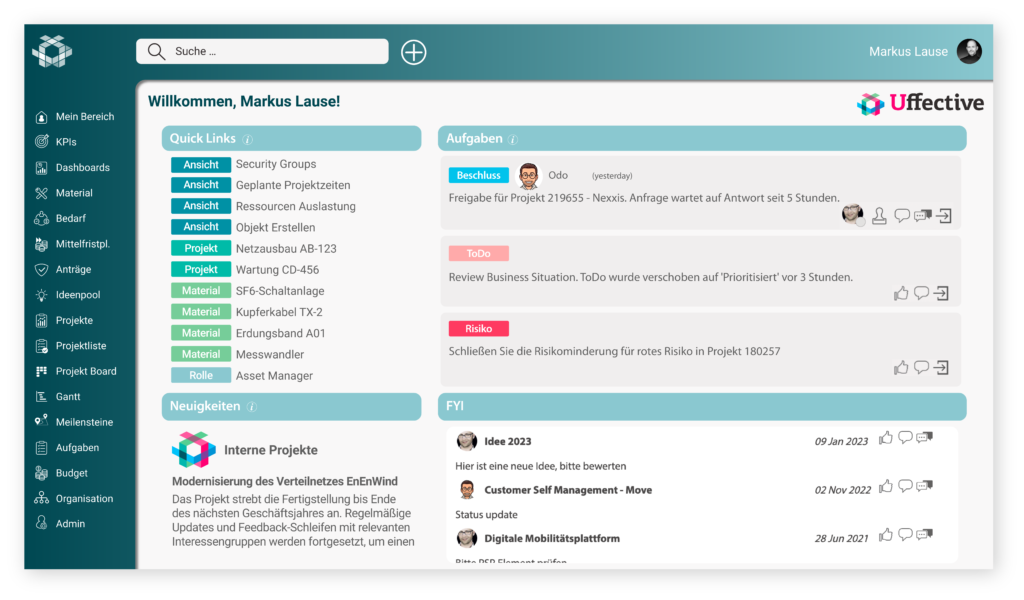In our first post, we outlined the main challenges in asset management for the energy sector. Today, we delve into how Uffective addresses these issues and optimizes processes for energy companies.
Qualification of Project Ideas and Measures
Uffective provides a robust framework for evaluating project ideas based on criteria such as costs, resources, time, and location. For the management of power and gas grids, both specialized and distribution networks, Uffective ensures that only the most viable and strategically important projects are pursued using tools like multi-criteria decision analysis and cost-benefit analysis. This enables targeted investments in projects that bring the greatest benefits and support corporate goals.
Efficient Budget and Resource Allocation
With Uffective, energy companies can better manage budgets and resources by visualizing dependencies and optimizing assignments. This is crucial for construction and infrastructure projects in the energy sector, whether for primary and secondary technology projects or the expansion of gas networks. Uffective enables efficient resource planning, leading to higher project success rates and reduced downtime.
Time Management and Planning
Our tool offers advanced planning functions that enable precise project timelines and ensure that projects are completed on time. This is especially important in the energy sector, where delays can have significant financial and operational impacts. Using Uffective, energy companies can optimize planning and execute projects more efficiently, whether for rough calculations or medium-term planning.
Strategic Location-Based Decisions
Uffective’s functionality helps in making informed decisions about where new infrastructures should be built. By analyzing location-based factors, companies can choose sites for power and gas projects that best align with their strategic goals and operational requirements. This ensures that new infrastructures are not only strategically well-placed but also optimally meet operational needs.
Risk Management and Opportunity Assessment
Uffective integrates comprehensive functions for identifying, evaluating, and monitoring risks and opportunities at all project stages. In asset management and project management for power and gas networks, proactive risk assessment allows for early detection of potential problems and appropriate countermeasures. At the same time, opportunities can be leveraged to gain competitive advantages and maximize project success. Integrating these processes throughout the project lifecycle ensures that risks are minimized and opportunities are maximized.
Capacity and Resource Management
Uffective provides powerful features for managing capacities and resources. This ensures that energy companies can optimally utilize their resources to meet the demands of their projects. Efficient management of material and equipment lists helps avoid bottlenecks and shorten project timelines.
Automated Reporting
Through automated reporting, energy companies can be promptly and accurately informed about the progress of their projects. Uffective allows for the creation of reports that detail the current status, risks, opportunities, and resource consumption. This supports informed decision-making and improves transparency throughout the project lifecycle.
Seamless Integration and Improved Collaboration
Uffective’s integration capabilities with ERP systems like SAP or ticketing systems like JIRA enhance data quality and speed up decision-making by breaking down departmental data silos. Uffective provides a cross-departmental single source of truth, simplifies data maintenance and workflows by conducting and mapping all important (decision-making) processes within the tool, thus reducing media breaks and potential errors. Additionally, the context-specific integrated chat function and Microsoft 365 integration facilitate collaboration, allowing employees to work together on documents and spreadsheets. This leads to increased efficiency and better project outcomes.

Stay tuned for our next post, where we will present real examples of the successful implementation of these solutions.






